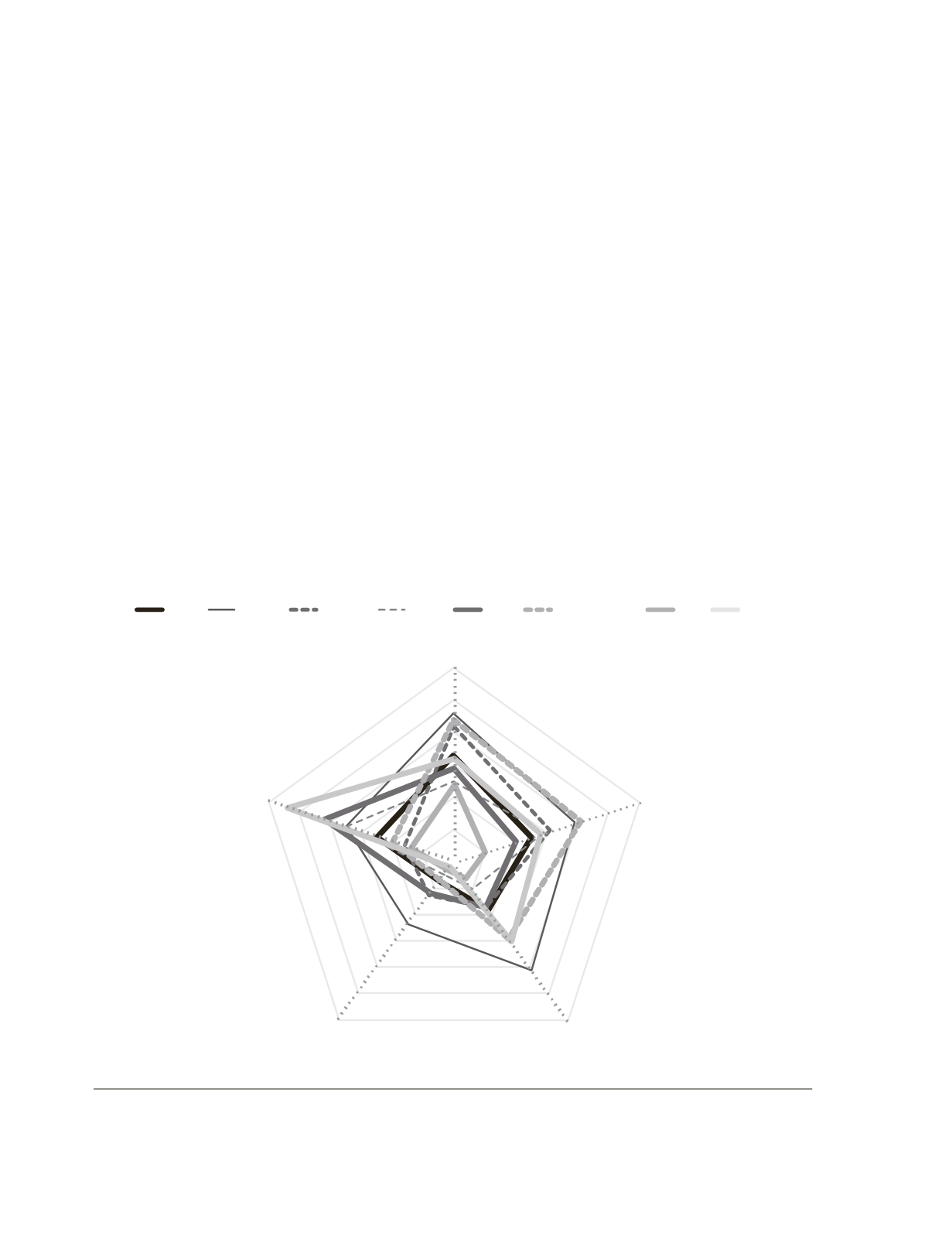

THE STATE OF THE EUROPEAN UNION
126
the issue of employment protection in a period
of decentralised, flexible and digital work in
“liberal”, “conservative”, “Mediterranean” and
“social democratic” states will require different
solutions. Applying dimensions of internal ver-
sus external modernisation, on one hand, and
social inequality, on the other, we can construct
a model that systematically shows the interac-
tions between digitalisation and the welfare
state and in which we can position the states
that have been examined (see
Table 1
).
Comparison reveals that Sweden has the
lowest level of social inequality due to the high
redistributive capacity of its social democratic
welfare state. It is also proactively and consist-
ently modernising its welfare state internally.
Sweden can therefore be considered a pioneer
of Welfare 4.0. Similarly, Estonia and the United
Kingdom, with their relatively good levels of
network coverage and progress in digital public
services, are taking the route of internal mod-
ernisation and benefiting very much from this in
the areas of connectivity and digital public ser-
vices. However, it is also becoming apparent that
the much stronger stratifying effect of post-so-
cialist (Estonia) or “liberal” (United Kingdom)
social security systems does not cancel itself out.
In fact, it is actually accentuated if it is not ac-
companied by targeted welfare state measures.
Estonia, in particular, is struggling with the ef-
fects of a strongly dualised labour market and
the social inequality that this brings with it.
By contrast, the “conservative” welfare
states of Germany and France are more strongly
Chart 3.
Comparison of the digital economy and society
Source:
Buhr
et al
., 2016 based on European Commission, DESI 2017.
0,3
0,4
0,5
0,6
0,7
0,8
0,9
Conectiviy
Human Capital
Use of Internet
Digital Public Services
EU 28
Sweden
Germany
France
Spain
United Kingdom Italy
Estonia
Integration of Digital Technology



















